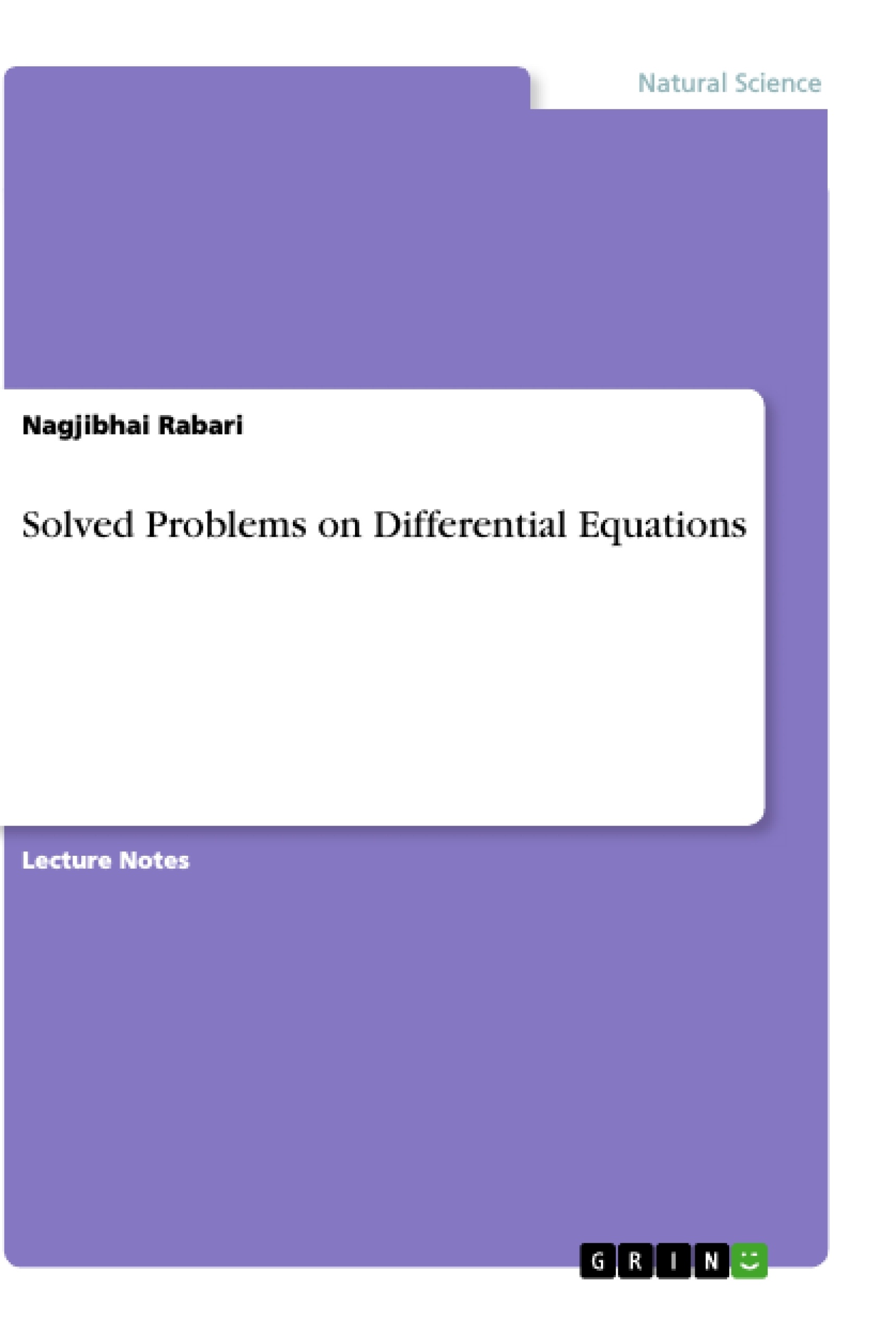This paper is about problem solving course on differential equations. It would invite the students to the subject of Mathematics and would inspire them to look to some comprehensive books on problem solving. This paper consists of several examples of differential equations and is based on lectures given to final year students of master programme. All examples are completely given in a lucid student friendly manner. A large number of solved exercises are included.
Table of Contents
- Q-1 Solve y\"+xy′+y\n= O near 0.
- Q-2 Solve (1 - x²)y” −2xy' +n(n + 1)y = 0 near 0 ; where n is constant.
- Q-3 State and solve Bessel's differential equation of order P near 0.
- Q-4 Check the nature of ∞ for x¹y\"+x³ (x + 2)y'+y = 0
- Q-5 Find an ordinary and singular points of the following differential equation y\"\n1\nY\" + (x−1)*(x+2)}' + (x−1) = 0\nx-\ny+\n
- Q-6 Discuss the behavior of singular soution of Bessel's equation and find its indicial equation.
Objectives and Key Themes
The main objective of this text is to demonstrate and explore various methods for solving different types of differential equations. This includes both ordinary and singular points, as well as the behavior of solutions near specific points.
- Solving differential equations using series methods
- Identification of ordinary and singular points in differential equations
- Analysis of the behavior of solutions near singular points
- Exploring specific types of differential equations, such as Bessel's equation
- Transformation of differential equations for analysis of different regions
Chapter Summaries
- Q-1: This section demonstrates the use of series methods to solve a second-order differential equation near the ordinary point x = 0. The solution is derived by substituting a series form for y and solving for the coefficients.
- Q-2: Similar to Q-1, this chapter utilizes series methods to solve a second-order differential equation, this time involving a constant parameter n. The method involves finding a recurrence relation for the coefficients of the series solution.
- Q-3: This chapter introduces Bessel's differential equation of order P and demonstrates its solution using the Frobenius method. This method involves finding a series solution with a possible fractional power of x.
- Q-4: This section investigates the nature of the point at infinity for a given differential equation. Through a transformation of variables, the equation is analyzed near the point t = 0, revealing the nature of the point at infinity as an irregular singular point.
- Q-5: This chapter focuses on identifying ordinary and singular points of a given differential equation. By examining the analyticity of the coefficients, it demonstrates how to classify points as ordinary or singular.
- Q-6: This chapter delves into the behavior of solutions near the singular point x = 0 in Bessel's equation. The indicial equation is derived, which determines the possible values of the exponent in the Frobenius series solution.
Keywords
This text focuses on the application of series methods for solving differential equations, with an emphasis on Bessel's differential equation. Key terms include ordinary points, singular points, regular singular points, irregular singular points, Frobenius method, indicial equation, Bessel's equation, and Bessel functions.
- Quote paper
- Nagjibhai Rabari (Author), 2019, Solved Problems on Differential Equations, Munich, GRIN Verlag, https://www.grin.com/document/499425



